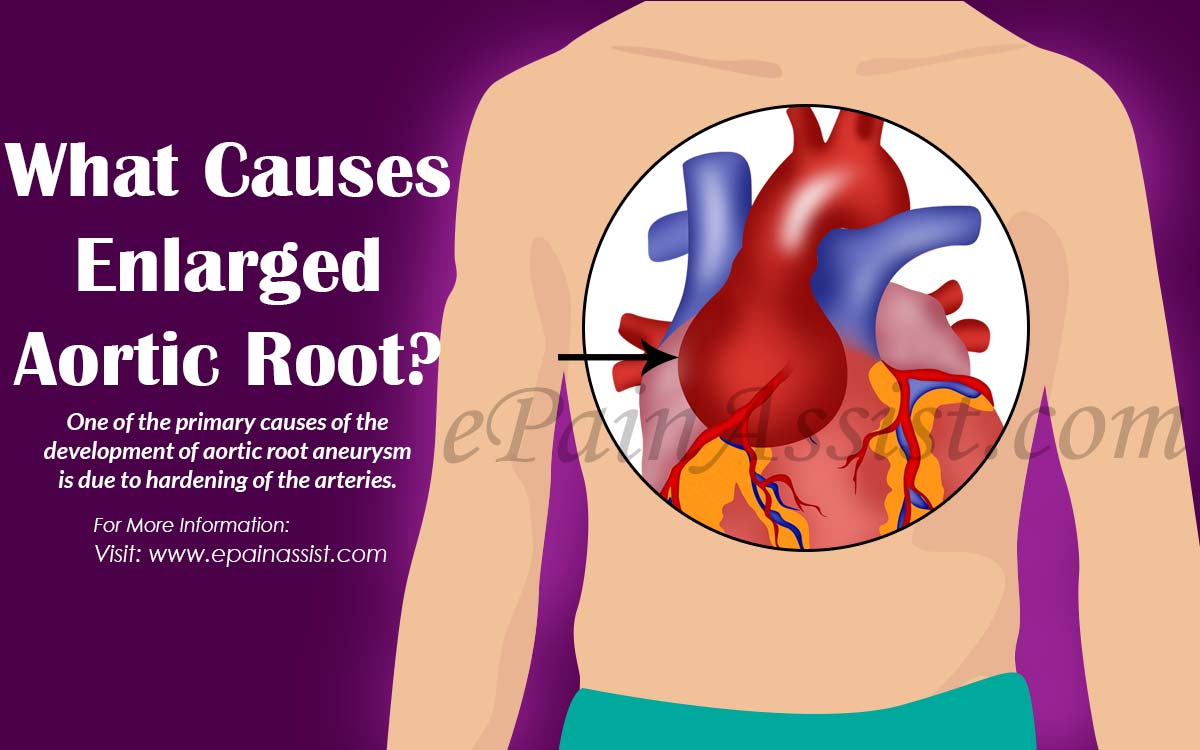The aorta is the longest artery in the human body. It is the blood vessel that helps in carrying the blood to different parts of the body. The aortic root is the foundation or the section that attaches to the heart. The root section consists of the branches of coronary arteries and the aortic valve. The annulus, the fibrous ring surrounds the aortic valve that contains three flaps.
Enlarged Aortic Root
An enlarged aortic root is similar to that of an aneurysm. In this case, the swelling occurs in the wall of the root of the aorta. When compared with an aortic aneurysm, an aneurysm developing to the aortic root is fatal because it causes aortic valve leakage. Generally, an aneurysm expands over a period at the rate of 10% per annum. Continuation the expansion results in a rupture. It is likewise possible for the layers to dissect causing aortic deception. Such situation leads to internal bleeding, making it impossible for the individual to survive.

What Causes Enlarged Aortic Root?
One of the primary causes of the development of aortic root aneurysm is due to hardening of the arteries. The arteries stiffen due to the buildup of cholesterol and fat content within the walls of the aorta. Because of this, the wall of the aorta roots becomes weak and breakdowns.
People suffering from Marfan syndrome along with disorders developed due to weak connective tissues possess a high degree of development of aortic root aneurysm. It is also common among people who smoke excessively and are obese.
Identifying Aortic Root Aneurysm
Screening for the dozens of aortic root aneurysm includes MRI scan, ultrasound, angiography, CT scan, and x-ray. An echocardiogram is also helpful in looking at the enlarged aorta roots. The results will be useful for identifying and measuring the first inch of aorta root.
If detected in the early stage, it is feasible for the specialist to prevent the growth with the help of medicines. In many circumstances, it becomes perverse to identify the presence of an enlarged aortic root because it does not reveal any symptoms until it reaches a dimensional of 5cm in diameter. It is here that the person feels dizziness, shortness of breath, vomiting sensation, nausea, and blurred vision.
When an aneurysm reaches the stated value in dimensional, the enlargement falls into the category of an aneurysm.
Treatment
Treating an enlarged aortic root varies according to the patient’s health. In addition to it, it also depends on the location and the size of an aneurysm. The privileges, as well as the hazards involved in treating aortic root aneurysm, are different when compared with that of abdominal and thoracic aortic aneurysms.
Operating is the possible solution where the aortic root aneurysm exceeds the size of 5cm. The reason is that the risk of rupturing is high in such cases. But, the surgeon will not jump to a conclusion directly based on this alone. He will calculate the risks involved based on the structure and location of the enlarged aortic root.
If the size is below the stated value, the doctor will continue to monitor with the help of regular screening procedures. During this period, the specialist will provide instructions that help in lowering the possibility of the growth of the enlargement. As high blood pressure and cholesterol play a key role in amplification, the doctor will refer to a dietician in preparation for a diet that helps in reducing the both. He additionally refers to therapists who help in lowering/quitting smoking. Addition of physical activities will help in reducing weight in those who are obese.
- Cleveland Clinic. (2021). Aortic Aneurysms. https://my.clevelandclinic.org/health/diseases/17557-aortic-aneurysms
- American Heart Association. (2021). Aortic Aneurysm. https://www.heart.org/en/health-topics/aortic-aneurysm
- Mayo Clinic. (2021). Aortic Aneurysm. https://www.mayoclinic.org/diseases-conditions/aortic-aneurysm/symptoms-causes/syc-20369472
- National Heart, Lung, and Blood Institute. (2021). Aortic Aneurysm. https://www.nhlbi.nih.gov/health-topics/aortic-aneurysm
